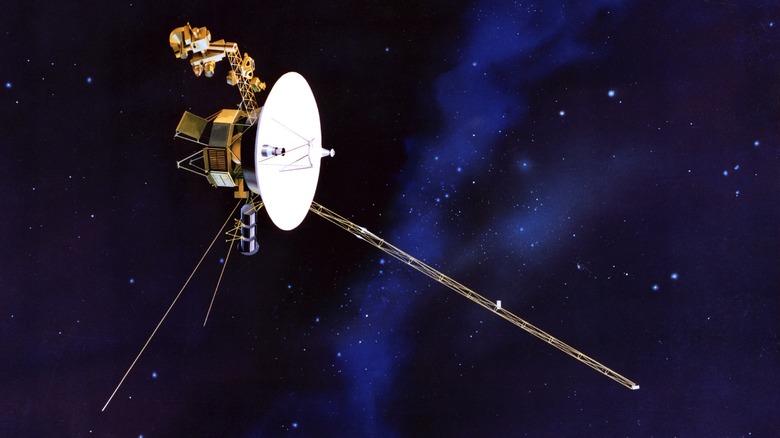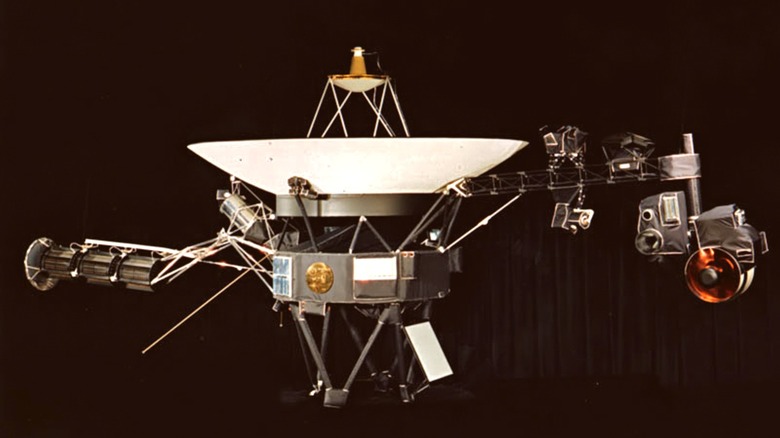NASA's Voyager 1 Is Set To Hit A Historic Landmark In November 2026
On September 5, 1977, NASA launched the Voyager 1 probe into space with the aim of studying the outer planets. Voyager 1 launched a couple of weeks after Voyager 2, and both probes have flown to the outer reaches the Solar System, breaking records as the furthest manmade objects ever made. The mission has been going on for nearly half a century, and in all that time, Voyager 1 has relayed a trove of data back to Earth, revealing much about the outer planets and the nature of our star system.
The Voyager probes launched in conjunction with precise planetary positions, allowing for gravity assists (colloquially known as slingshot maneuvers) to move them further out in space. As a result, Voyager 1 is traveling at a speed of around 38,000 miles per hour. While that is undeniably fast and an impressive feat of human engineering, it's slower than a snail's pace when compared to the speed of light.
As of this writing, NASA's Voyager 1 is located approximately 15.67 billion miles from Earth, which is around 2.61 billion miles further than Voyager 2. The Voyager 1 mission has hit several milestones, including crossing the heliopause and entering interstellar space on August 25, 2012. In November 2026, it will hit yet another milestone when it becomes the first manmade object to reach a distance of one light day from Earth. A light day is the distance light travels through a vacuum in 24 hours, which is calculated as 1.609×10^10 miles, or approximately 16.09 billion miles.
One light day and the Voyager 1 probe's fate
The Voyager 1 mission will ultimately come to an end when it travels beyond the range of communications in 2036. Additionally, its energy source will only last so long, so it will cease all functions around the same time. Once this happens, the spacecraft will continue on its trajectory until acted upon by an outside force. While still in comms range, NASA repaired a Voyager 1 system at a distance of over 15 billion miles.
In September 2025, when Voyager 1 reaches one light day from Earth, it will be one of the last achievements made by the impressive probe. Because the spacecraft will be one light day away from Earth, it will take an entire day for a signal to reach it — radio waves travel at the speed of light in a vacuum — and another day for its response to return to Earth. Due to its current trajectory and speed, it's possible to determine what will eventually happen to Voyager 1, but we'll be long gone when something interesting occurs.
While Voyager 1 has passed through the heliopause into interstellar space, it still needs to proceed through the Oort Cloud. It should reach the closest point of the Oort Cloud in around three centuries, but it could take another 30,000 years to pass completely through. The probe will then head towards the constellation Ophiuchus, and in the year 40,272 A.D., it will travel within 1.7 light-years of a star within the constellation Ursa Minor.

